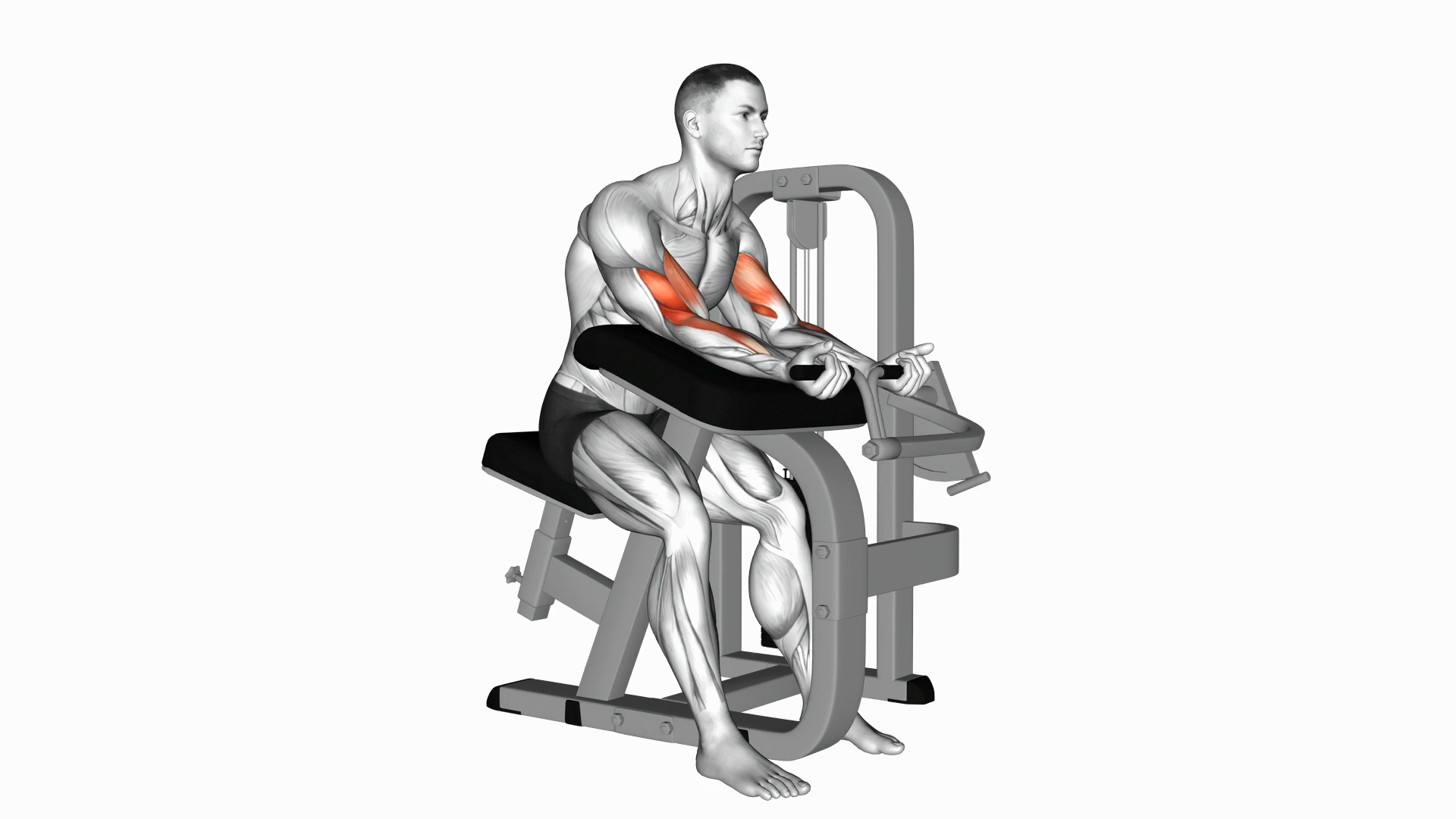The Ultimate Guide to the Lever Preacher Curl

The Lever Preacher Curl is an ace of an exercise that targets your biceps in isolation, providing exceptional strength and muscle development. It's not just about the biceps; it's also about enhancing your core strength, mobility, and overall performance.
In this guide, you will learn:
- What the Lever Preacher Curl is and who it benefits
- The anatomy and muscles worked by the exercise
- The key benefits of performing Lever Preacher Curls
- A step-by-step guide to properly perform the exercise
- Pro tips for better results
- Common mistakes to avoid
- Programming strategies for different goals
- Variations and progressions of the exercise
- When to use the Lever Preacher Curl in your routine
🕵️ What Is the Lever Preacher Curl?
The Lever Preacher Curl is a strength training exercise that isolates the biceps muscles. It is performed using a lever machine and a preacher bench, which supports the upper arms and prevents them from moving during the exercise. This makes the exercise highly effective for athletes, bodybuilders, and anyone looking to develop their biceps and improve their upper body strength.
🧠 Anatomy and Muscles Worked
Primary Movers:
- Biceps Brachii: The main muscle targeted in the Lever Preacher Curl. The isolation of this movement places significant stress on the biceps, encouraging growth and strength.
Secondary/Supporting Muscles:
- Brachialis: Located underneath the biceps, it assists in elbow flexion.
- Brachioradialis: This muscle of the forearm aids in the curling motion.
✅ Benefits of the Lever Preacher Curl
- Biceps Isolation: The preacher bench prevents other muscles from assisting, making the biceps work harder.
- Improved Strength: It can significantly increase upper body strength.
- Muscle Hypertrophy: Regular execution can lead to increased muscle size.
- Versatility: It can be incorporated into any strength training or bodybuilding program.
- Injury Prevention: It strengthens the muscles surrounding the elbow, reducing the risk of injury.
🛠️ How to Perform the Lever Preacher Curl (Step-by-Step)
Setup:
- Adjust the lever machine to match your height.
- Position yourself on the preacher bench with your upper arms resting on the pad.
Execution:
- Hold the lever handles with an underhand grip.
- Curl the weight upwards, flexing at the elbow.
- Slowly lower the weight back down.
Reps:
Perform 3 sets of 8-12 reps.
🧠 Pro Tips for Better Results
- Keep your elbows stationary.
- Use a full range of motion.
- Control the weight, don't let the weight control you.
- Exhale as you curl the weight up.
- Don't rush the reps; slow and steady wins the race.
❌ Common Mistakes to Avoid
| Mistake | Why It’s Bad |
|---|---|
| Using Too Much Weight | It can lead to improper form and potential injury. |
| Not Using Full Range of Motion | Limits the effectiveness of the exercise. |
| Rushing Through Reps | Reduces the time under tension for the muscles, diminishing the benefits. |
🧬 Programming Strategies
Core Strength: Perform 3 sets of 8 reps with heavier weight.
Hypertrophy: Perform 4 sets of 12 reps with moderate weight.
Rehab & Stability: Perform 2 sets of 15 reps with lighter weight.
🔁 Variations and Progressions
| Variation | Purpose |
|---|---|
| Dumbbell Preacher Curl | Provides unilateral work, improving muscle balance. |
| Reverse Grip Preacher Curl | Targets the brachialis and brachioradialis muscles. |
🧱 When to Use the Lever Preacher Curl
- During your arm training days
- As a finisher exercise for an upper body workout
- To break a plateau in bicep development
- When you desire to focus specifically on your biceps
- While rehabilitating from an elbow or bicep injury
The Lever Preacher Curl is more than just another bicep exercise. It's a testament to the power of focused, isolated work. It's an opportunity to understand your body better, to push your limits, and to see tangible results. Remember to maintain proper form, breathe correctly, and keep your movements controlled. Here's to stronger, more defined biceps!